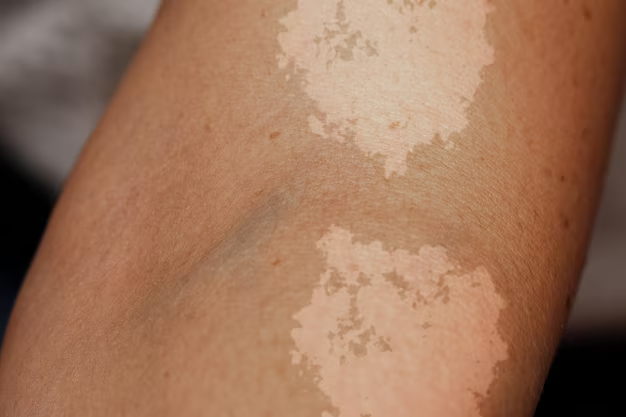Recognizing Shingles: A Guide to Identifying and Understanding the Rash
Imagine this: you feel a tingling sensation on one side of your body. Soon after, a rash appears. The discomfort grows, and blisters, filled with fluid, start to form. If you're asking yourself, "What am I dealing with here?" you could be experiencing shingles. This article will guide you through what a shingles rash looks like, helping you recognize, understand, and navigate this condition.
Understanding Shingles
The Basics of Shingles
Shingles, medically known as herpes zoster, is caused by the reactivation of the varicella-zoster virus, the same virus responsible for chickenpox. After you've recovered from chickenpox, the virus lurks dormant in your nerve tissue, only to potentially reactivate years later as shingles. It typically affects those over 50 or individuals with weakened immune systems, although it can occur at any age.
Why Early Recognition Matters
Spotting a shingles rash early can make a significant difference. While early recognition and treatment won't cure the condition instantly, they can mitigate symptoms, speed up recovery, and reduce the risk of complications.
Identifying the Shingles Rash
So, what does a shingles rash look like? It's important to recognize its unique characteristics:
Initial Signs and Symptoms
Tingling or Pain:
- It starts subtly: Before any rash appears, you may notice unusual sensations like tingling, itching, or even pain in a localized area of your skin.
Localized Sensation:
- One-sided feelings: The initial symptoms often occur on one side of the body, typically beginning on the trunk, but they can also appear on the face or legs.
The Rash Unfolds
Red Patches:
- The rash begins: Within a few days, red patches or raised bumps start to develop in the area where the initial tingling was felt.
Blister Formation:
- Blisters appear: These red patches evolve into clusters of fluid-filled blisters. They might look similar to chickenpox and can be excruciatingly itchy or painful.
Blisters Burst and Crust Over:
- The progression continues: Within 7-10 days, these blisters often burst, ooze, and eventually crust over.
Additional Characteristics
Distribution Pattern:
- Localized, band-like appearance: Interestingly, the rash follows the path of specific nerve fibers, making it easily identifiable to an observer familiar with shingles. It often wraps around your trunk like a half-belt.
Sensitivity:
- Touch sensitivity: The area of the rash can be highly sensitive to touch, often causing sharp pain even with minimal contact.
Duration and Healing:
- The lifecycle: Typically, it takes 2-4 weeks for shingles to clear up completely.
Misidentifying Shingles
Conditions That Can Be Confused with Shingles
Eczema:
- Similar rash appearance: Like shingles, eczema can cause itchy and inflamed skin. However, eczema is not typically one-sided and doesn't cause blisters in the same progression.
Psoriasis:
- Scaly, red patches: This condition causes scaly, red patches too, but they are more persistent and often affect the scalp, elbows, and knees.
Contact Dermatitis:
- Reaction to irritants: Often a reaction to a topical irritant, it can be itchy and red like shingles but lacks the nerve pain and distinct blistering pattern.
Why Accurate Identification Is Essential
Misidentifying shingles can lead to delays in adequate care, increasing the risk for complications like postherpetic neuralgia, a condition where pain persists long after the rash has healed.
Practical Tips on Managing Shingles
Instead of prescribing treatments, we aim to provide useful guidance that can empower you to take necessary steps:
What To Do If You Suspect Shingles
Seek Professional Evaluation:
- Get a diagnosis: Consulting a healthcare provider is key. They can provide a confirmed diagnosis and discuss potential management options tailored to your condition.
Monitor Symptoms:
- Keep an eye on changes: Regularly check the progression of your rash to provide accurate information to your healthcare provider.
Self-Care Measures
Comfort and Relief:
- Soothing lotions and cool baths: While avoiding any friction to the rash, use calming lotions or take cool baths to provide comfort.
Avoid Scratching:
- Do not scratch: Scratching can cause further skin irritation and increase infection risk.
Rest and Nutrition:
- Allow your body to heal: Adequate rest and a nutritious diet can support your immune system as it combats the virus.
The Broader Impact of Shingles
Understanding Complications
Postherpetic Neuralgia (PHN):
- Lingering pain: A significant number of shingles patients experience PHN, where nerve pain lingers for months or even years.
Vision Problems:
- Ophthalmic shingles: If shingles affect the eye, they can lead to vision complications, making immediate medical attention imperative.
Neurological Issues:
- In rare cases: Shingles can lead to complications like encephalitis, which involves inflammation of the brain.
Vaccine and Prevention
Shingles Vaccine:
- Your shield against shingles: The shingles vaccine is effective at reducing your risk of developing shingles and its associated complications.
Who Should Consider Vaccination:
- Recommended age and categories: Generally recommended for adults over 50, the vaccine is an important consideration to discuss with your healthcare provider.
Closing Insights
Recognizing a shingles rash is the first step in managing your health proactively. Understanding its distinct characteristics and the importance of timely action can make a significant difference in your recovery journey. Engage with your healthcare provider for personalized advice and explore preventive measures to safeguard your well-being.
Quick Reference: Key Points on Shingles Rash
- 🧐 Symptoms Begin: Tingling or pain, usually one-sided.
- 🔴 Rash Appearance: Red patches develop where tingling was felt.
- 💧 Blister Formation: Red patches evolve into fluid-filled blisters.
- 🖐️ Sensitivity: Highly sensitive to touch; sharp pain persists.
- 🗓️ Duration: Typically clears in 2-4 weeks.
- 🔗 Potential Complications: Postherpetic neuralgia, vision issues.
- 🛡️ Consider Vaccination: For adults over 50 to reduce risk.
By being informed, you can navigate your health choices with confidence and clarity.
